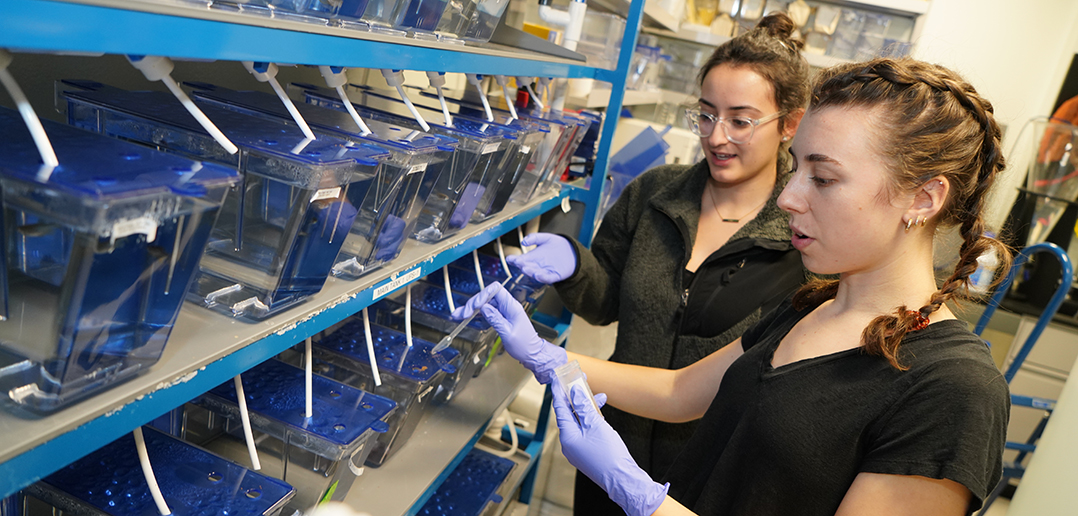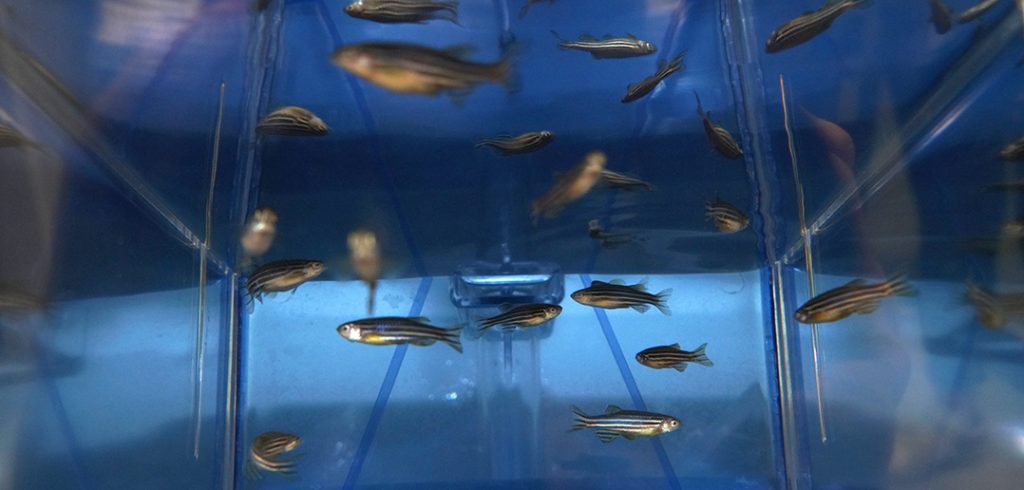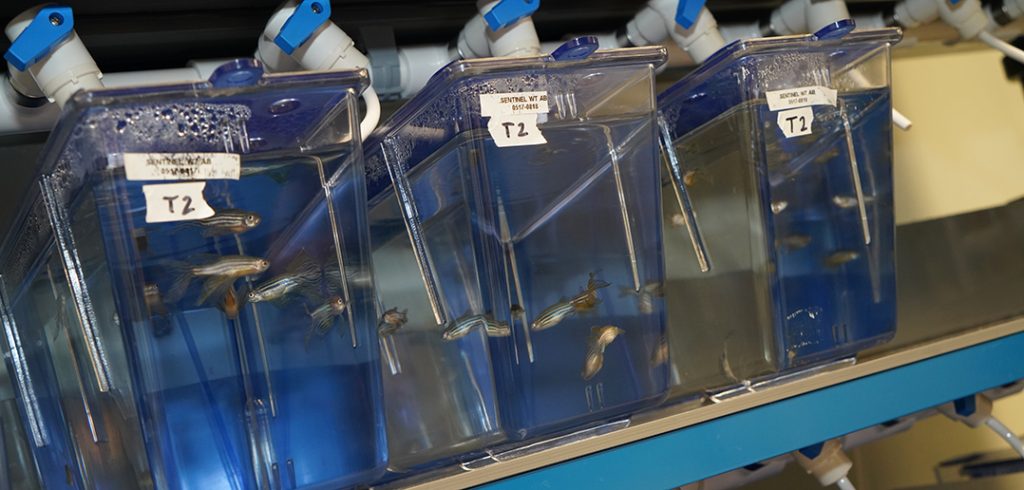
- This event has passed.
Students Map Genes on Zebrafish Embryos
Wednesday, February 5, 2020, 8 a.m. – 5 p.m.

“I went into a lab telling Doctor Rodenas that I have shaky hands and thinking that that was just going to be curtains for me and I wasn’t going to be able to do it,” said Caushi.
She credited Rodenas-Ruano with giving her just the right balance of guidance and autonomy in the lab for her to gain confidence.
“Not everyone is going to hold your hand along the way, so when you’re put in an environment where you have to work by yourself, you practice a lot—and yes, sit there and get frustrated—but you have to work through it and figure out how best to maneuver,” she said. “But I think being able to accomplish these experiments has definitely allowed me to consider surgical options for my career that I wouldn’t have thought about before.”
Rodenas-Ruano said as difficult as dissection can be, it’s not as hard as the actual science.
“They [the students]are building their fine motor skills and they are amazing at it, but that’s the easy part,” said Rodenas-Ruano. “The hard part is being able to do biochemical and molecular experiments in an accurate and reproducible way, to measure levels of gene expression and what that gene associates with that could regulate it.”
Rodenas-Ruano tasked Caushi and her partner in the lab, Eveline Murphy-Wilson, with creating an epigenetic map of the KCC2 Chloride transporter in neurons in developing zebrafish. In other words, they are using developmental neuroscience with the zebrafish to look into the mechanisms behind the nervous system.
In the nervous system, there are excitatory and inhibitory neurons, explained Caushi. Excitatory neurons allow information to flow, in the form of electrical activity, through the brain. Inhibitory neurons regulate or quench that electrical signal when appropriate. Initially, all the neurons are excitatory, but at a critical point in development, a population of those excitatory neurons become inhibitory. And that is important, because balance between the excitatory and inhibitory neurons is necessary for normal brain function, said Caushi.
“An imbalance could be related to diseases such as autism and epilepsy,” she said. “It’s important that we study this.”

Examining Fast-Developing Embryos
The kcc2 gene triggers the inhibitory neurons. The gene is known as a chloride exporter because it maintains the chloride concentrations inside and outside the cell that are ultimately responsible for neuronal inhibition. Ultimately, the student researchers are trying to find out what “turns on” this powerful gene. Last summer, junior Eveline Murphy-Wilson found that the KCC2 gene was turned on at 18 hours after zebrafish is fertilized.
“The zebrafish have a really quick developmental period, so we’re able to get a lot of research done in a shorter amount of time than if we were working with mammals,” said Murphy-Wilson. “They also develop the eggs externally, so they’re not inside the mom, which allows us to manipulate them in ways that we wouldn’t be able to work inside mammals.”
Through a confocal microscope, students can follow embryonic development from one cell to two cells to four cells to eight cells and onwards, said Rodenas-Ruano. Within 16 hours students begin to see what looks like a fish. They switch to a stereomicroscope when they begin dissection and remove the chorion, the outermost embryo membrane of the embryos. Then it’s off with their heads to get to the brain where microdissection begins. They stain the brain to examine whether there is an expression of proteins important for excitation or inhibition.
Controlling the Process
In order to tell how many hours after fertilization that the kcc2 gene turns on, one must know exactly when fertilization takes place. To do that, the students attempt to control and observe the process.
In nature, zebrafish mate when the sun rises. But in the small room filled with fish tanks at the Lincoln Center lab, students control the light cycle. To set up a mating, they plan the dissections and experiments first and work back from there to select an ideal time for fertilization to take place. It takes about 30 minutes for the female fish to mate and drop her eggs. Then the clock starts ticking on that roughly 18-hour observation period. Students have to think fast so they can examine them at the right time to focus on what turns the kcc2 gene on.

Troubleshooting on the Fly
“It’s here that critical thinking comes in to play; it means you have this information, you have these skills, but in biology, things aren’t always the same,” said Rodenas-Ruano. “So they have to think on their feet and modify things, troubleshoot so that we can make this a good, reliable experiment that’s going to give us some reproducible, accurate data.”
Alma Rodenas-Ruano said that normally this type of research is the type of research done at med schools and Ph.D. programs, but the Natural Science Department has some very talented undergraduates.
“These experiments they’re doing are very, very difficult to do because they require a very specific precision and repetitiveness that also requires skill and knowledge, all of which they have,” she said.
